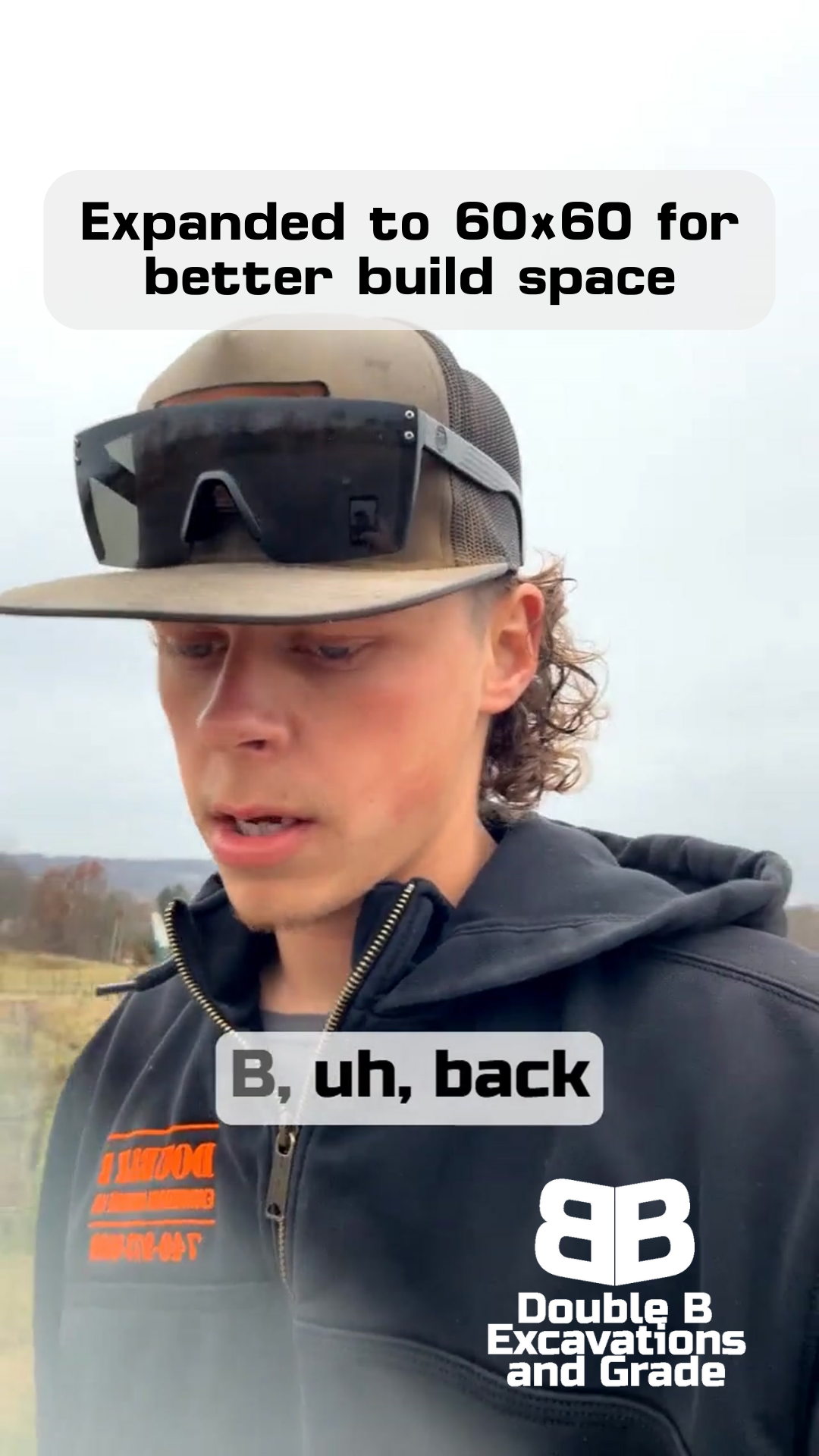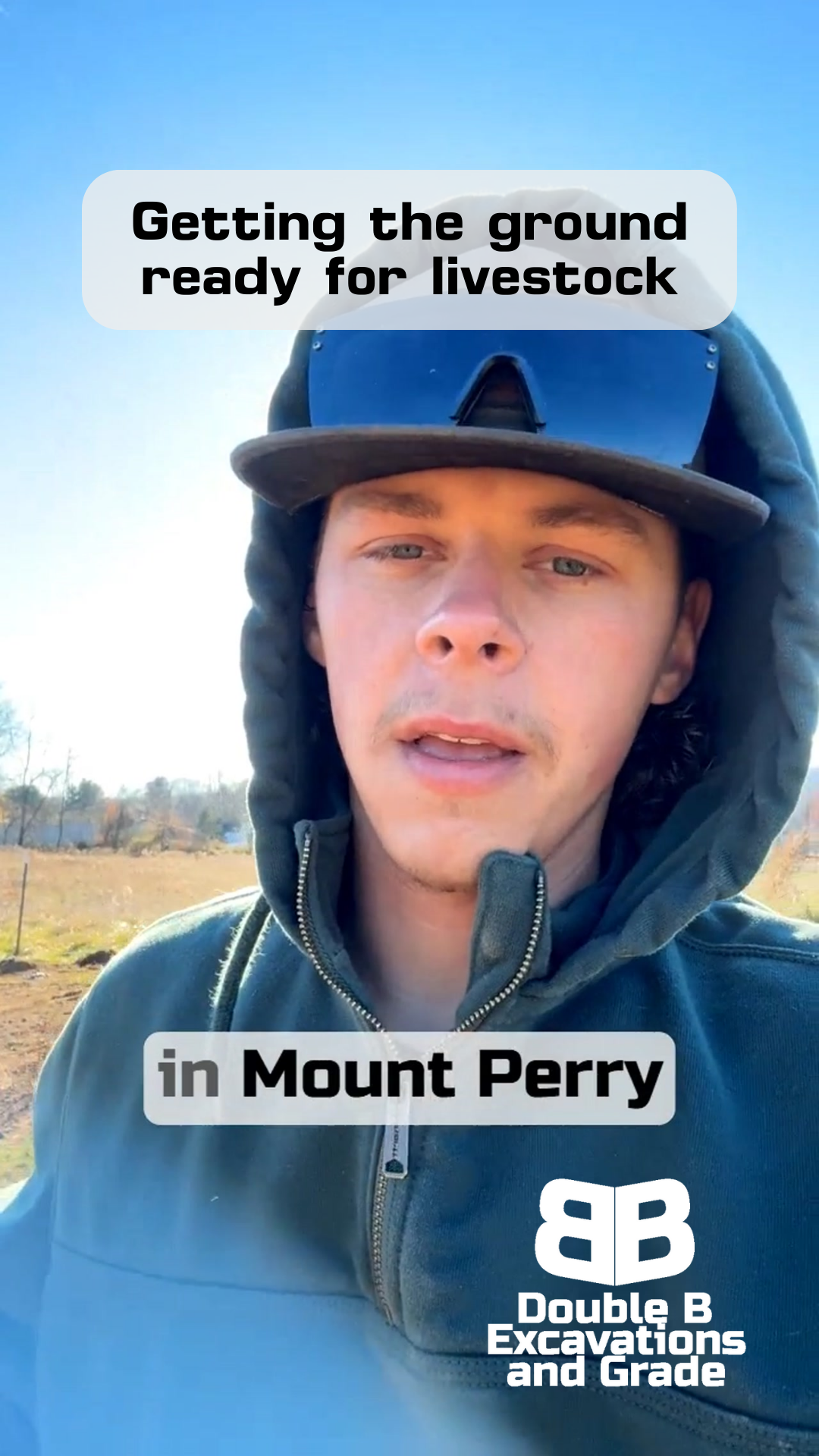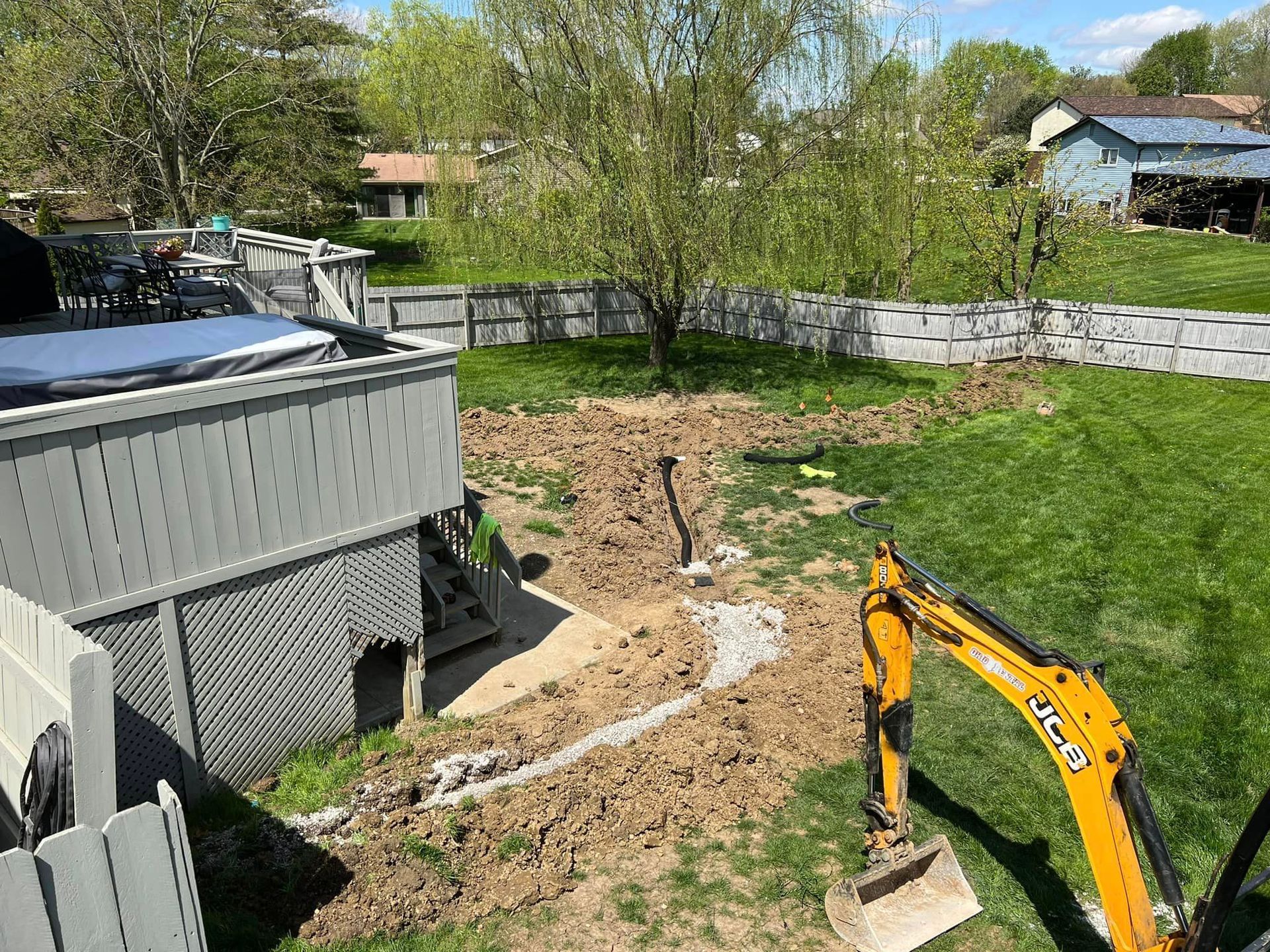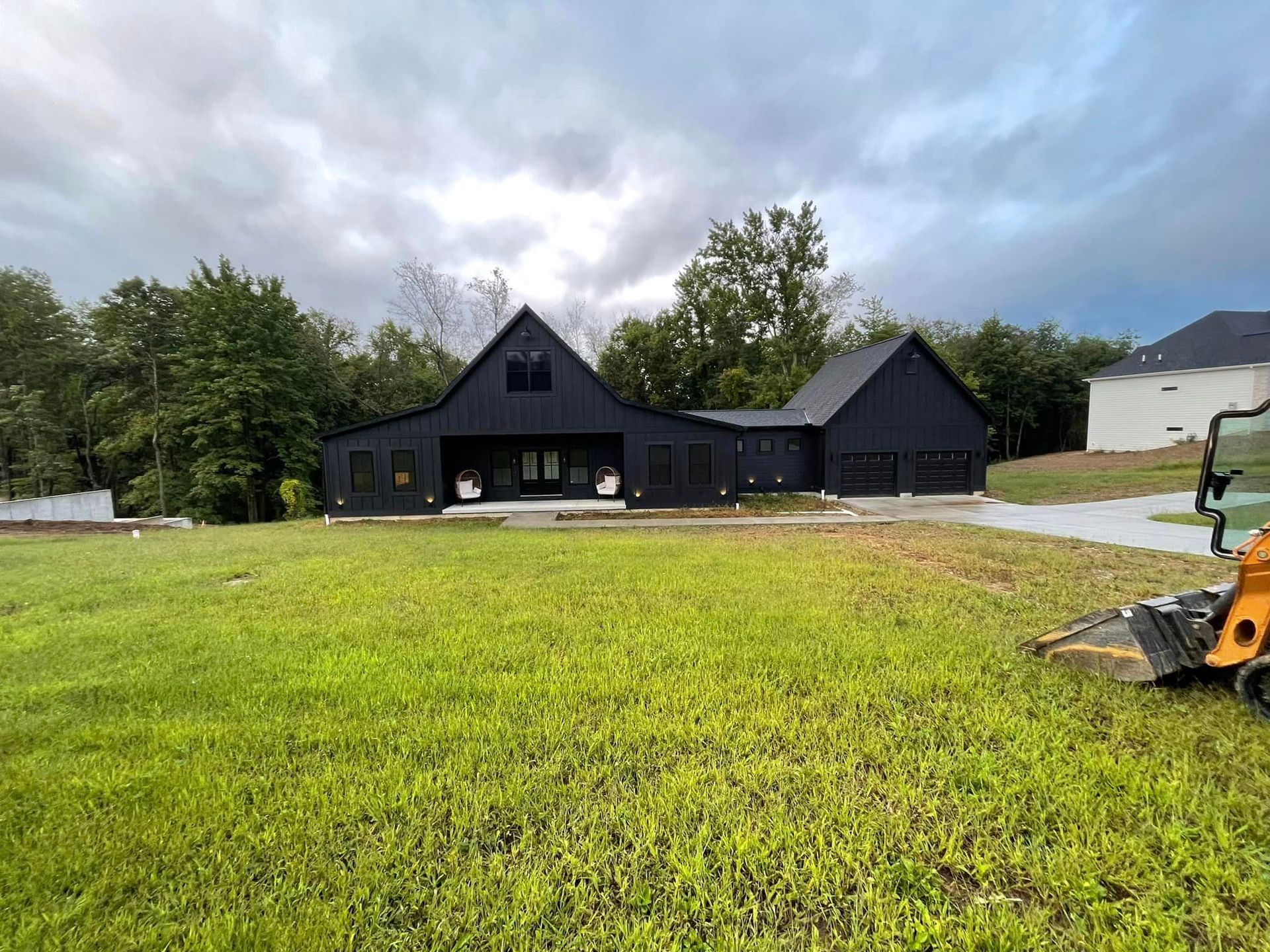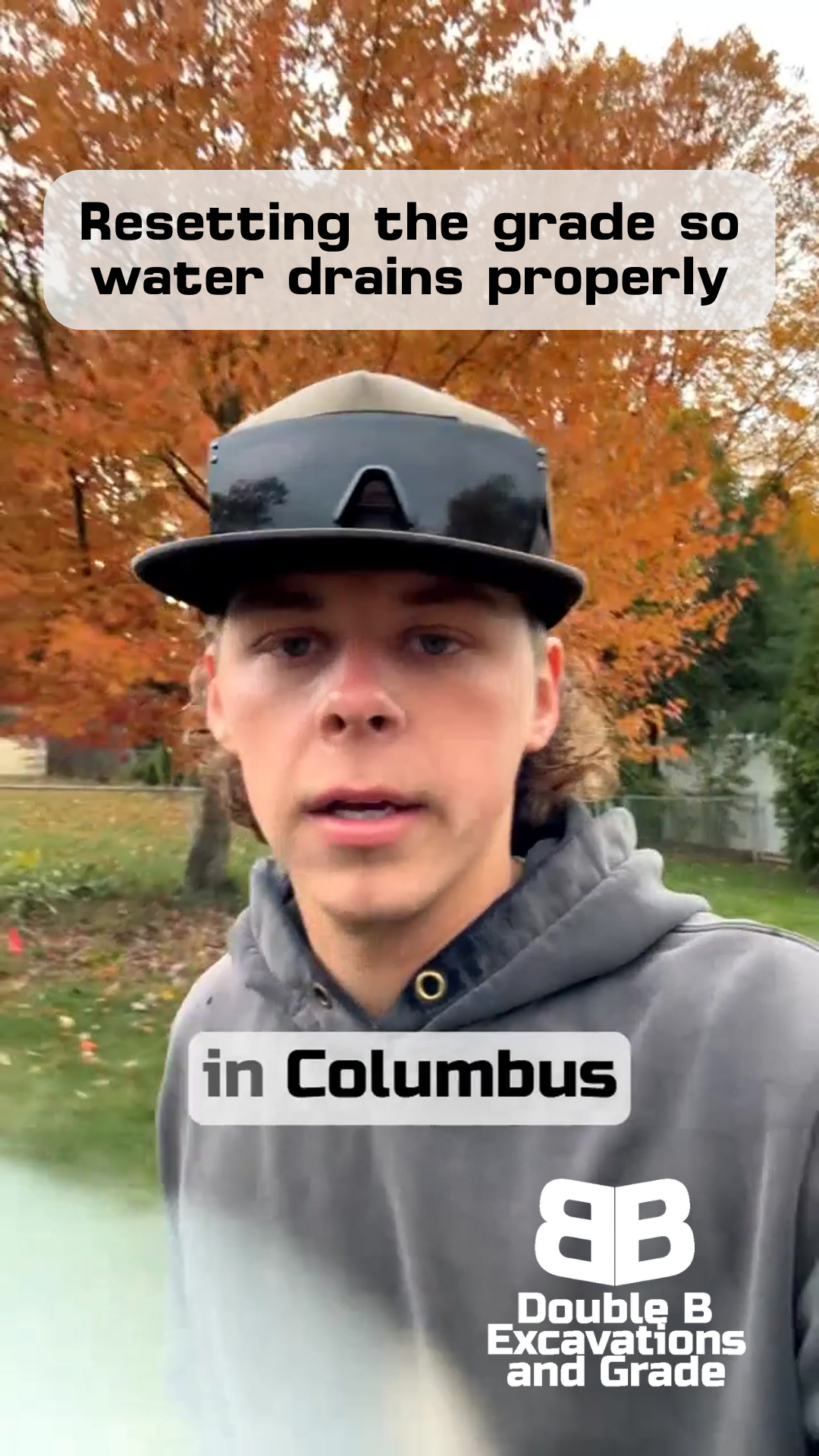From Deep Ditch to Safe Solution: Adapting Drainage Plans in Real Time
Double B Excavations & Grade LLC
Making Adjustments on the Fly
PAYING ATTENTION TO THE DETAILS TO BE SURE THE JOB GOES RIGHT
Sometimes the best test of a drainage system is a good hard rain.
When the skies opened up over our Pickerington project yesterday, we got exactly what we needed - a real-world look at how our water management plan was working.
And while most of it was working perfectly, that rain showed us something important: we needed to make a change.
That's the thing about excavation work - you can plan everything down to the inch, but sometimes you need to adjust on the fly to give customers the best possible solution.
It's not about sticking to the original plan no matter what.
It's about getting it right, even if that means making changes mid-project.
Welcome to Double B!
Initial Project Status
We're three days into this Pickerington project, and our initial drainage setup was doing exactly what it was supposed to do.
We designed a smart water management system with swales (that's like a shallow ditch) running along both sides of the driveway. The water flows left on one side, right on the other, both leading to a central culvert.
When yesterday's downpour hit, it was actually pretty exciting to see everything working as planned.
The water flowed exactly where it should - down the swales, through the culvert, and out into the field behind the power box.
That kind of real-world test is worth its weight in gold because it shows us exactly how the system performs under pressure.
The Challenge Discovered
Here's where things got interesting. While the water flow was perfect, we noticed something that needed attention. The ditch we'd created was deeper than we'd like to leave open, especially with its location. When you're working around power lines, you've got to think differently about your solutions.
See, it's not just about getting the water to flow right - it's about making sure the finished project is safe and practical for the homeowner. A deep, open ditch might handle water great, but what happens when someone backs a trailer over it? Or tries to mow around it? These are the real-world issues we have to think about. Between the power line restrictions and being so close to the driveway, we couldn't just grade the swale back to make it smoother and shallower like we normally would.
Adapting the Solution
This is where experience comes in handy. Instead of just leaving a potentially dangerous situation, we came up with a better fix: adding 180 feet of covered culvert. This isn't just throwing a pipe in the ground - it's a carefully planned solution that solves multiple problems at once.
The covered culvert will:
- Keep water flowing exactly where it needs to go
- Eliminate any safety concerns about the deep ditch
- Make maintenance easy for the homeowner
- Work around those power line restrictions
- Create a clean, finished look
The best part? Everything will still drain to the same spot, working with our original water flow plan. It's just safer and more practical now. Sure, it means extra work for us, but doing it right means our customer won't have to worry about it down the road.
Why Communication Matters
Here's something I've learned over years of doing this work: the best contractors don't just fix problems - they talk about them first. When we spotted this issue, we didn't just make the call on our own. We stopped, talked it through with the customer, and made sure they understood both the problem and our solution.
Think about it - nobody likes surprises on their property, especially when it comes to changes in the plan. But when you take the time to explain why you're suggesting a change, most folks appreciate that you're looking out for their best interests. It's not about what's easiest for us - it's about what's going to work best for them in the long run.
Wrapping it Up
At Double B, we're proud of how this project is coming together. Sure, we could have stuck to the original plan and left that deep ditch open. But that's not how we do things. Sometimes getting the best result means being flexible and making smart adjustments along the way.
If you've got drainage issues on your property in Pickerington or anywhere in central Ohio, remember - the right solution isn't always the first solution. What matters is working with someone who'll take the time to get it right, even if that means making changes mid-project. We're always happy to take a look at your property and talk through options that will work best for your specific situation.
Want to see how this project turns out? Keep an eye on our updates. We'll show you the finished product once everything's complete and tested. Because at the end of the day, seeing is believing - especially when it comes to drainage solutions.
